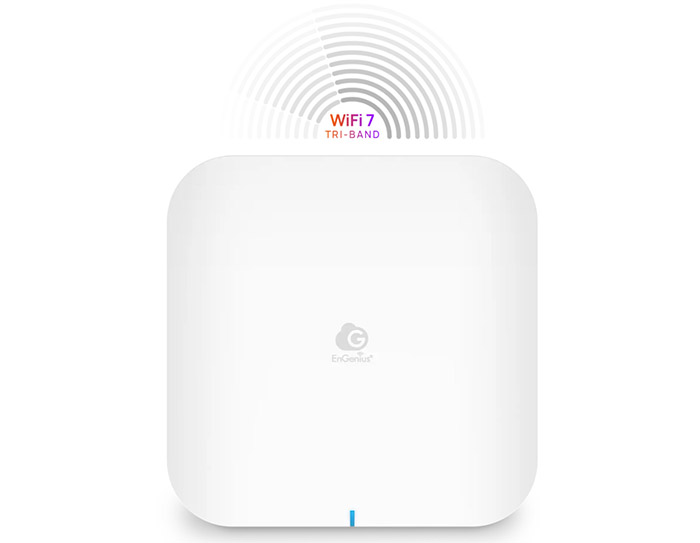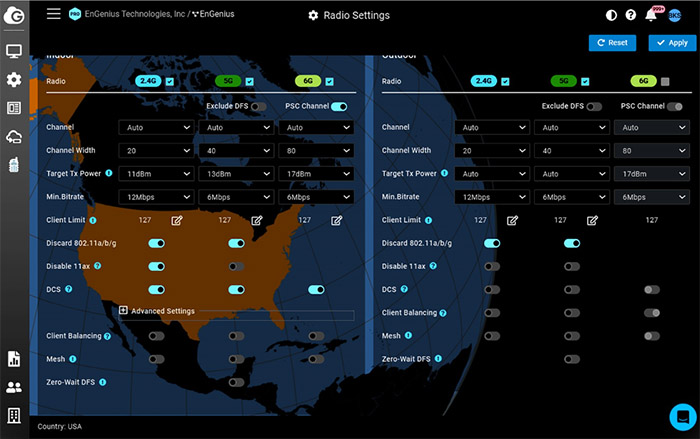EnGenius Technologies has recently announced that it will launch their first Cloud WiFi 7 access point series (IEEE 802.11be) with a special focus towards enterprise use. And the first AP from this new series will be the EnGenius ECW536 which is powered by the Qualcomm Networking Pro Series.

This platform has been launched a year ago and Qualcomm has mentioned support for up to 16 stream, for the 320MHz channel bandwidth and for its ability to reach peak throughputs over 10Gbps. That’s impressive, but does the EnGenius ECW536 manage to support the entire spectrum of features? EnGenius mentions that these are the highlighted features of the WiFi 7 access point:
- The ECW536 supports a maximum theoretical data rate of 11,600Mbps on the 6GHz radio band, up to 5,800Mbps on the 5GHz radio and a maximum of 1,440Mbps on the 2.4GHz radio band. These should not be mistaken for actual throughput performance, since in my experience, the real life speed is usually about half (or even lower) than the advertised theoretical data rates. They’re still impressive numbers.
- The AP supports some of the advanced features that we saw on the WiFi 6E devices which includes OFDMA, 4×4 MU-MIMO and the EnGenius ECW536 also has a 10GbE port (PoE++). I know that one of the best features of the WiFi 7 standard is the MLO which stands for Multi-Link Operation and it’s the ability to transmit and receive data via different links. At the moment this article is posted, I have seen no mention that the EnGenius ECW536 supports this feature, but I assume it does since it’s one of the main reasons to move all the equipment to the WiFi 7 standard. I also assume that there will be support for 320MHz.
- The ECW536 is backwards compatible with older clients and this is an important factor to keep in mind because if you haven’t changed the WiFi adapter in all your devices, they’ll still work fine within a network created by a WiFi 7 AP. Of course, to actually make use of all (or some of) the advanced features, you do need to have compatible client devices.
- The WiFi 7 access point can be monitored and controlled using the centralized EnGenius Cloud platform. In a similar manner to the other Cloud-managed access points, the ECW536 can be configured and monitored remotely using the EnGenius Cloud platform. And it’s worth mentioning that the manufacturer has made some significant advancements in the security department, allowing the system admins to more easily fix client devices issues remotely, as well as prevent any potential intrusion.

That being said, is the market ready for the adoption of the WiFi 7 standard? I would argue that the SMBs and the home network users will not yet jump the bandwagon, but the enterprise market may see some benefit into an early adoption of this standard. I have mentioned several times before when I tested WiFi 6 and 6E devices that a lot of businesses will avoid those standards due to their transitory nature and I think that upgrading from WiFi 5 to WiFi 7 feels like a more natural transition.
And there is a lot to gain especially considering the almost-interference-free 6GHz will be available along with higher capacity and wider channel bandwidth. I think that the WiFi 7 will also bring the normalization of 10GbE Ethernet ports which is needed on enterprise networks. You can read more about the new WiFi 7 AP series and about the EnGenius ECW536 on the official website. It’s also worth mentioning that the ECW536 will be available in early Q4 of 2023.

Mark is a graduate in Computer Science, having gathered valuable experience over the years working in IT as a programmer. Mark is also the main tech writer for MBReviews.com, covering not only his passion, the networking devices, but also other cool electronic gadgets that you may find useful for your every day life.
